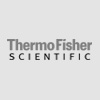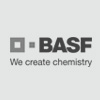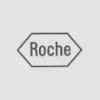- Description
- Specifications
Catalog #: CYT-240
Description:
Prolactin Ovine Recombinant produced in E.Coli is a single, non-glycosylated polypeptide chain containing 199 amino acids and having a molecular mass of 23 kDa. The Prolactin n is purified by proprietary chromatographic techniques.
Synonyms:
Mammotropin, Luteotropic hormone, Luteotropin, PRL.
Source:
Escherichia Coli.
Amino Acid Sequence:
The sequence of the first five N-terminal amino acids was determined and was found to be Ala-Thr-Pro-Val-Cys-Pro.
Purity:
Greater than 98.0% as determined by:
(a) Analysis by SEC-HPLC.
(b) Analysis by SDS-PAGE.
Solubility:
It is recommended to reconstitute the lyophilized Prolactin in sterile 18MΩ–cm H2O not less than 100 µg/ml, which can then be further diluted to other aqueous solutions.
Formulation:
The protein was lyophilized from a concentrated (1mg/ml) solution with 0.0045mM NaHCO3.
Stability:
Lyophilized Prolactin although stable at room temperature for 3 weeks, should be stored desiccated below -18 °C. Upon reconstitution Prl should be stored at 4 °C between 2-7 days and for future use below -18 °C.
For long term storage it is recommended to add a carrier protein (0.1% HSA or BSA).
Please prevent freeze-thaw cycles.
Activity:
Is fully biologically active as evidenced by inducing proliferation of Nb2 cells.
Physical Appearance:
Sterile Filtered White lyophilized (freeze-dried) powder.
Protein Content:
Protein quantitation was carried out by two independent methods
1. UV spectroscopy at 280 nm using the absorbency value of 0.85 as the extinction coefficient for a 0.1% (1mg/ml) solution. This value is calculated by the PC GENE computer analysis program of protein sequences (IntelliGenetics).
2. Analysis by RP-HPLC, using a calibrated solution of Prolactin as a Reference Standard.
Usage:
Denovo Biotechnology's products are furnished for LABORATORY RESEARCH USE ONLY. The product may not be used as drugs, agricultural or pesticidal products, food additives or household chemicals.
References:
1.Title:Prolactin Treatment Improves Engraftment and Function of Transplanted Pancreatic Islets.
Publication:Published online before print December 18, 2008, doi: 10.1210/en.2008-1318 Endocrinology April 1, 2009 vol. 150 no. 4 1646-1653 .
Link:http://endo.endojournals.org/content/150/4/1646.full
2.Title:ISLET ENDOTHELIAL CELLS AND PANCREATIC ?-CELL PROLIFERATION: STUDIES IN VITRO AND DURING PREGNANCY IN ADULT RATS.
Publication:Endocrinology. First published January 26, 2006 as doi:10.1210/en.2005-0997.
"
















